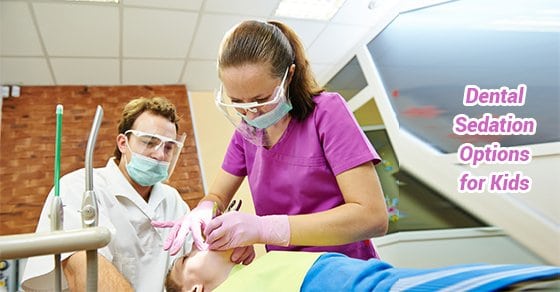Sedation dentistry is when a calming drug like a mild sedative is used to keep the patient at ease while they receive oral care. When it comes to children, there are several dental sedation methods that can be used. These methods are safe and will help your child feel comfortable during their dental procedure.
Why is dental sedation necessary?
There are many reasons that dental sedation is required. Your child may have a strong gag reflex or feel incredibly anxious about going to the dentist. In both cases, sedation will be used. Another reason dental sedation is put to use is if you have a rowdy child who cannot sit still. This is for their own safety as well as the safety of the dentist. If your child moves too much during their procedure, they may accidentally knock an instrument out of the dentist’s hand, causing unnecessary damage to their mouth.
What are the most common types of dental sedation?
Conscious sedation is used on children that require multiple procedures at once. This type of sedation is also used on children with special needs because it allows them to relax while the dental work is being done. Conscious sedation will not put your child to sleep, although they may become sleepy. They will still be able to respond to voices and have full control over their protective resources.
This can be administered by:
- Gas (inhaled)
- Pill or syrup (swallowed)
- Shot (injected)
- Intravenously (through the veins)
Oral sedation is another form of dental sedation used for children. This type of sedation is stronger than its conscious cousin and it usually administered orally. Oral sedation is often used on children who require more help when it comes to sitting still. It is also used when a child is extremely anxious about their dental procedure. It can make your child nauseous when it wears off, but other than that there are little to no side effects. Oral sedation will make your child heavy-eyed and he/she may even fall asleep completely.
General anesthesia will render your child unconscious so that the dentist can safely work on their mouth. Your child will fall into a deep sleep and will feel no pain. General anesthesia is administered in a hospital by an anesthesiologist and is required for larger surgeries like the removal of tonsils. Your child will be monitored when they are under general anesthesia to ensure that no risks are incurred.
No matter what type of dental sedation is used on your child, remember that going to the dentist may be scary for a young person. At Sierra Dental we can chat with your child and let them know that their teeth are in good hands.
